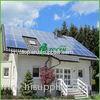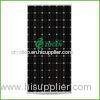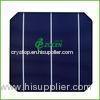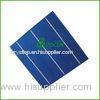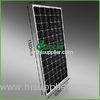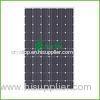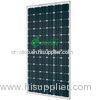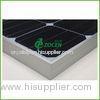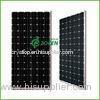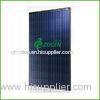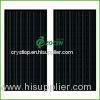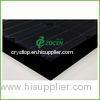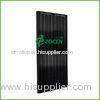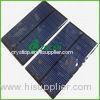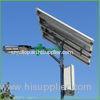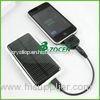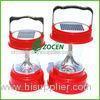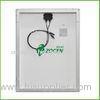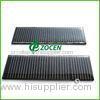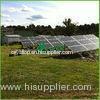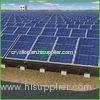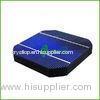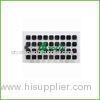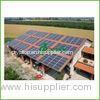Three Phase Inverter Grid Tied Solar Power System 10KW For Home
| Place of Origin: | Zhejiang, China (Mainland) |
|
|
|
| Add to My Favorites | |
| HiSupplier Escrow |
Product Detail
<td style="width
|
Items
|
10KW Grid tied solar power system |
Load power
|
10000W |
|
Application
|
Home |
Solar Power
|
10000W |
|
Output Voltage
|
360V~440V |
Warranty
|
25 years |
Ground Mounting Solar System,On Grid 10KW for Home, Solar Grid Tied Roof Top System
1> Quick Detail:
- Place of Origin: China
- Brand Name: ZOCEN
- Model: ZCGT-10KW
- Certificate: CE, CQC, IEC, TUV, CEC, MCS, CHUBB, BV, ISO9001
2>Description:
|
Solar Panels
|
40pcs, 250W Polycrystalline panels |
|
Inverter
|
Three phase 10KW outdoor on grid inverters |
|
Bracket
|
aluminum bracket one set |
|
DC Switch
|
Air Isolator 1000V |
|
AC Switch
|
Air Breaker 1000V |
|
Monitor
|
WIFI Plug |
|
Ground Earth Cable
|
6sqmm |
|
Ground Earth Clamp
|
Copper with screws |
|
Cable
|
4/6 S.q.mm one set |
|
AC power
|
10000Watt |
|
Nominal AC voltages
|
360V~440V |
|
Nominal AC frequency
|
50Hz/60Hz |
|
Efficiency
|
96.50% |
|
Euro ETA
|
95.50% |
3> What is a "grid-tie" system?
A "grid-tie" solar system is the most common method of installing a residential solar power system. Grid-tie systems are connected to the main power grid and are designed to sell power back to the utility company. In an arrangement known widely as "net metering", homeowners get paid for the electricity they generate in excess of what they use. This means that a system that produces 115% of a homeowner's annual electricity needs, the electric utility will pay for the extra 15% that was produced by the system. Homeowners often not only completely eliminate their electric utility bill but they may actually realize a net profit. Net-metering works only on "grid-tie" solar or wind power systems. Because you must be connected to the utility grid, off-grid power systems are not compatible to net-metering programs. These systems can be designed offset any percentage of your kilowatt-hour utility usage.
- One-stop service from components to logistics
- High-efficiency solar modules included
- Provides long term and reliable power performance
- With over-voltage, low and overload protection
- Easy-to-install
- Fast and accurate delivery; no waste and waiting time
- Free pre-sale technical support, including system design
- Long service lifespan: Zocen Solar confirm that our solar panel will last for at least 25 years, 5 years warranty on material and workmanship, and guarantee the output will be 90% after 10 years.
4> How does a grid-tie system work?
A grid-tie electrical system is a system that generates electricity and is connected to the main power grid. These systems are typically based on renewable energy sources such as the sun or wind. Solar, or photovoltaic, or PV, grid-tie systems convert sunlight into electric current. Solar panels absorb photons of light from the sun, producing DC current electricity. Another system component, the grid tie inverter, converts this DC current into AC current which can then either be used by electric "loads" in the home or it can be directed onto the main power grid for a credit toward your monthly electric utility usage.
5> Components details
- Solar panels:
- with 25years lifetime 12years warranty, with CHUBB insurance guaranteed.
- Only use A grade solar cells.
- Positive tolerance.
 |
Maximum Power | 250 |
| Power Tolerance | ±3% | |
| Open Circuit Voltage(Voc) | 37.30 | |
| Short Circuit Current(Isc) | 8.73 | |
| Maximum Power Voltage(Vmp) | 30.10 | |
| Maximum Power Voltage(Imp) | 8.31 | |
| Module Efficiency | 15.37% | |
| Max. System Voltage | 1000VDC | |
| Solar Cells | Polycrystalline156*156mm(6 inch) | |
| Cells series | 60cs(6*10) | |
| Bypass Diodes | 6pcs 12A | |
| Temperature Coefficients of Pmax | -0.47%/°C | |
| Temperature Coefficients of Voc | -0.33%/°C | |
| Temperature Coefficients of Isc | 0.05%/°C | |

